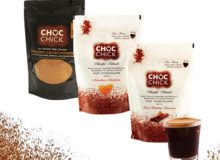Get started with Pilates

Research crowned Pilates the UK’s favourite workout of 2020 – but the number of beginners who decided to take it up in lockdown didn’t surprise Hollie Grant, Pilates instructor and founder of The Pilates PT Method. ‘All of a sudden, people are working from home, and no longer sat at desks in ergonomic chairs,’ she says. ‘Many struggle with back pain or tension in their neck as a result. Pilates has traditionally been prescribed to people with back pain because it actually does work.’
Pilates is easy to slot into your gym class-starved life. ‘There are types which require equipment, like reformers or the Wunda Chair, but for mat Pilates you just need a yoga mat,’ says Grant. ‘It’s also really safe for everybody, no matter your age or ability. I used it during pregnancy; when I was injured; and when I was training for an ultra-marathon.’
So what is it? Pilates was developed in the 1920s by German trainer Joseph Pilates, who believed in the connection between mental and physical health. ‘It was a set of exercises predominantly used by dancers to help improve strength and flexibility,’ says Grant. ‘I would describe it now as an exercise methodology with an emphasis on strength, muscle balance and posture.’ Think repetitive muscle contractions, movements and stretches to challenge the body.
The benefits
‘The exercises all improve strength and flexibility, which in turn give you freedom of movement and better posture,’ says Grant. ‘We’re trying to ensure all the muscles in the body work as well as each other, creating a more neutral posture.’ Pilates works your core unlike any other workout – in one study, 36 weeks of training saw women strengthen their rectus abdominis [abs] by 21%. ‘People say they notice muscles they didn’t know they had,’ says Grant. It brings a heightened awareness of the body, and a focus on the breath, benefits mental health, while slow, controlled movements mean it’s easy on joints.
What Pilates kit do beginners need?
‘Definitely a yoga mat. A Pilates ring, or fitness circle, can add resistance, as well as stabilising and assisting exercises,’ says Grant. Other nice-to-haves are resistance bands, and blocks for under your head – or use pillows and rolled up towels. ‘Kit wise, I prefer people to be barefoot, so they can feel the floor. And tight-fitting clothing is best, so we can see technique – for example, checking the position of the pelvis.
Learn Pilates online
Check your online instructor is experienced, and qualified from a dedicated Pilates school (like Stott, BASI and Body Control), says Hollie Grant, and that you understand what they’re asking of you – key for successful video learning.
• Grant is live-streaming classes via Zoom – £10 per class pilatespt.co.uk
• Pilates Anytime has thousands of workouts to stream.
• London’s Heartcore studio has live and recorded classes.







